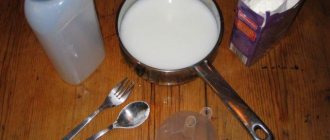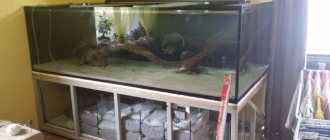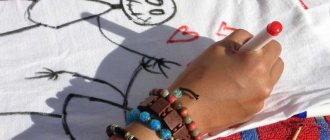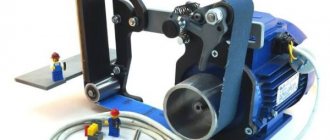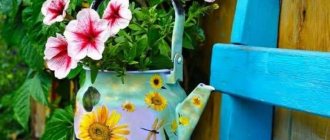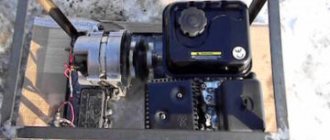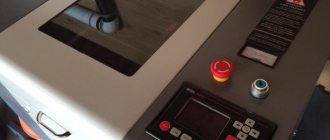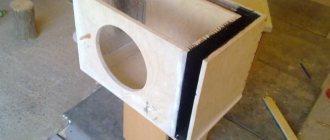Today, store shelves are full of a variety of glues of different prices and compositions - I don’t want to choose! However, there are those who prefer to make it themselves, which, by the way, saves a lot of money.
In this article we will tell you how and from what to make glue from improvised materials, and it is no worse than in the store.
Paste - a traditional flour recipe
Paste is perhaps the best wallpaper glue. It is based on flour. It is absolutely non-toxic and safe for children. It can be used at home.
One liter of it is enough for about 2-3 rolls of wallpaper.
To make it you will need:
- Two containers: for mixing glue and for water.
- Flour - 6 tablespoons per 1 liter of water.
- Water - 1 liter.
Let's start making:
- Take the first container, pour water into it and bring it to a boil.
- At this time, in another, thoroughly mix the flour and cold water until it becomes liquid sour cream, so that there are no lumps.
- Without ceasing to stir the mixture of flour and water, we begin to pour boiling water into it in a thin stream.
- Mix everything well, bring to a boil again, set aside and then let cool.
The consistency of the mass will resemble thick jelly. If there is suddenly no flour in the house, then ordinary starch will do instead, and the quality will not suffer from this. They can easily replace wallpaper glue from the supermarket.
For the sake of experimentation, before applying it to the surface of the wallpaper, take small pieces and adhere them to each other.
It is also great for working with different types of paper, such as cardboard.
Main components of the compositions
The composition of the adhesive is the most important factor determining its adhesive properties. Now on packaging with mixtures you can see shocking compositions, replete with a variety of components.
However, in Soviet times, the glue was based on simple and accessible substances, and one could only envy the strength and reliability of the finished composition. The glue of yesteryear was made to last for centuries, as evidenced by many things from that era that have survived to this day.
Previously, flour or starch was used as a base. These products are excellent binders. However, to impart special properties to the mixture, additional components are required:
- Ceramic slabs require cement;
- rubber glue uses dissolved rubber;
- Gelatin must be present in stationery compositions.
Sometimes, to give special strength to homemade glue, ready-made dry mixtures are added to the main components.
Depending on the purpose, there are different options for how to make glue.
DIY PVA
In second place in terms of efficiency and popularity is PVA glue, which is rightfully considered universal, since the scope of its use is quite extensive. The good news is that no special technology is used in its manufacture, which means we can weld it at home.
What we need:
- Distilled water - 1 liter.
- Photographic gelatin - 5 g. (sold in photo stores).
- Pharmaceutical glycerin - 4 g.
- Flour - 100-150 gr.
- Ethyl alcohol - 20 ml.
Preparation consists of 2 stages:
- You need to soak the gelatin in a glass of water for a day.
- The manufacturing process itself.
After the gelatin has swollen, we begin the process:
- Place distilled water in a water bath, add gelatin and flour pre-mixed with water.
- Mix everything well.
- Bring to a boil, but do not boil! Gradually it will turn white, similar to thick sour cream.
- At the very end, add ethyl alcohol and glycerin. Be sure to stir the mixture constantly until it becomes fairly thick - about 10 minutes.
- After the mass has cooled, it can be used for work.
Homemade glue for plastic - Metals, equipment, instructions
Plastic products are widely used in everyday life. If they break, you need to know what kind of plastic glue you will need for repairs. To ensure a strong and safe gluing result, we advise you to become more familiar with the types of plastic and the rules for selecting an adhesive composition.
What does the marking on plastic mean?
Since some adhesives may dissolve rather than bond plastic, it is recommended that you examine the markings on the broken product.
The plastic type icon looks like a triangle formed from arrows (recycling symbol). Inside it there are numbers from 1 to 7, and below there is an inscription.
These identification marks determine whether the material belongs to a particular type of plastic, which will allow you to select the correct adhesive.
What types of plastic exist:
- 1 (PET) - stands for polyethylene terephthalate. It is used to produce food packaging for liquid products.
- 2 (HDPE) - high-density polyethylene, intended for the production of packaging and shrink film.
- 3 (PVC) - polyvinyl chloride, better known as PVC. Plastic windows, linoleum, etc. are made from it.
- 4 (LDPE) - low-density polyethylene; toys for children, pipes, bottles, and packaging containers are made from it.
- 5 (PP) - polypropylene, heat-resistant material. It is used for the production of food packaging, disposable medical instruments, household appliances, pipes, thermal utensils.
- 6 (PS) - polystyrene. Disposable tableware is made from it. Foamed polystyrene is widely used in construction.
- 7 (O) - this type of plastic cannot be recycled and consists of a mixture of polymers, paper, and foil.
Glue second
Glue marking
The main difficulty is that the glue markings do not match the plastic recycling symbols.
How is glue for plastic marked?:
- PE - polyethylene;
- PC - polycarbonate;
- PP - polypropylene;
- PVC - polyvinyl chloride;
- PMMA - organic glass;
- PUR - polyurethane;
- PA 66 - polyamide.
Sometimes it is easier to find clear instructions in Russian than a marking icon. But if there are no recommendations on the packaging, then the symbols will help you make the right choice.
Types of glue
Plastic has low adhesion due to its smoothness, making it more difficult to glue than other materials. In industry, such products are fastened by welding.
This method is not used at home, but you can choose a good glue. The principle of operation of the composition is this: it dissolves the surface, and with strong squeezing the parts are connected.
Therefore, the main component of plastic adhesive is a solvent of synthetic polymers. For viscosity, the composition contains liquid polystyrene.
Liquid glue for plastic and Moment plastic
The group of adhesives for plastics can be divided into the following types:
- Hot melt adhesive . Represents solid adhesive rods. They must be heated before use. There are special guns for convenient application of hot melt glue, and there are also types of glue for use without a gun. This composition is suitable for small jobs, as it does not have special bonding strength.
- Contact . It is often sold complete with a hardener, which must be mixed with the bulk in the proportions indicated on the pack. This type of glue can tightly glue plastic, but there is one drawback: the product is toxic. It is necessary to use personal protective equipment. For better fastening of the parts, after applying the glue, you need to wait 10 minutes, and only then squeeze them tightly.
- Liquid plastic adhesive is water-based and is considered the least effective bonding method. It takes a long time to dry (at least a day). It is used to repair small items that are not subject to increased loads. But liquid glue samples do not deform the plastic; this is very important for working with small parts.
- Reaction is a reliable and affordable adhesive option for plastics. There are several types of such compositions: some are designed to work under water, others harden under the influence of ultraviolet radiation, and others work in the open air. There are one-component and two-component ones.
3M Scotch-Weld PR100
Advice! Do not use toxic contact adhesive to glue children's toys.
Product examples
What can be found on the shelves of construction and hardware stores:
- “ Moment plastic” is a type of glue that connects many types of plastics. It has a transparent base, sets quickly and forms a strong connection. This is a waterproof and heat-resistant composition. However, it contains toxic substances and is not used to repair products that come into contact with food or skin.
- “Super Moment ” - second glue.
- 3M Scotch-Weld PR100 is an epoxy adhesive that hardens in 20 seconds. Simple and easy to use composition.
- " Cosmofen " is a brand that offers several types of glue for plastic. Among them are adhesive-sealant for transparent plastic, Plus composition for PVC, PMMA - adhesive for polystyrene and acrylic surfaces.
- " Second " - superglue for hard plastics. One of the fastest acting compounds.
- For minor car repairs, special automotive plastic sealants are sold.
- Rexant is a hot melt adhesive, available in the form of rods. It can be transparent or colored (to disguise joints if colored parts are connected).
- Akfix HT300 is a heat- and water-resistant composition. Withstands temperatures up to +300 degrees. This adhesive sealant contains silicone. It reacts to humid air.
This is not the entire range that the adhesive industry offers. It cannot be said that any glue is better or worse. Each composition is designed for specific types of work. Read the instructions carefully and follow all recommendations.
Rexant and Akfix HT300
How to glue plastic
The type of plastic has been determined and the required glue has been selected. How to properly glue plastic objects:
- Parts should be cleaned. If necessary, degrease the item with soap solution or ethyl alcohol. A clean surface has greater adhesion and objects will be easier to stick to.
- It doesn't hurt to lightly sand the surfaces to roughen them up. This way the glue will stick better.
- Two-component compositions are mixed only after surface preparation.
- If parts are coated with glue using a brush, then use an object with artificial bristles.
- The glue is applied in such an amount that when compressed, its excess does not protrude to the surface.
- You need to squeeze objects together firmly, but carefully.
- The duration of adhesion of materials depends on the selected adhesive.
Advice! Use a needle to glue a thin crack.
Sometimes you need to attach a variety of materials to plastic: wood, glass or metal. In this case, the glue must take into account the characteristics of the two surfaces being connected, and not just the plastic.
Glue Super moment
Tips for working with plastic :
- For external work, waterproof glue is used.
- Despite the high temperature that the glue can withstand, plastic objects themselves should not be exposed to it.
- When working with contact adhesive, it is necessary to ventilate the room.
- The best adhesive for marking 7 (O) is epoxy. This type is also suitable for polystyrene.
- If there is no marking on the product, then proceed from this: for plastic toys and artificial glass, polystyrene is used mainly; For bottles, buckets and boxes, glue designed for polypropylene and polyethylene is suitable.
Take the time to study the labeling of plastic products and glue. If repairing small toys like Lego is a simple process, then for more serious work the familiar Secunda glue may not be suitable for everyone.
How to glue plastic: technique, necessary materials and tools, step-by-step instructions
There are often situations in everyday life when you simply need to know how to glue plastic together as securely and accurately as possible.
Although modern material is especially popular among manufacturers of many attributes, there is no single method and means for restoring integrity in the event of damage.
Therefore, in order to extend the life of a broken, but not completely damaged item, it is worth learning a few secrets regarding gluing plastic.
A thorough analysis of the situation is the key to success
In order to reconstruct plastic correctly and return the material to its former strength, you need to thoroughly think through every step. Therefore, before gluing plastic, you need to pay attention to the following nuances:
- Determine the type of material. To do this, you need to understand the markings that are applied to the product.
- It is worth carefully examining the location of the breakdown. If there is an oblique chip, it is easier to glue the surface. If a part with straight edges breaks, repair may not always be possible.
- You need to decide what functional load the damaged area of plastic can withstand. At maximum impact, conventional bonding may become useless.
- If it is necessary to combine plastic with another type of material, then it is necessary to determine the features of such repairs.
Sometimes there are additional conditions and circumstances that are also worth paying attention to before performing work.
Selecting a fixing agent to restore the integrity of plastic is quite simple if you compare the type of material and the markings on the packaging of the substance. Typically, a reactive adhesive is used for this type of repair. This product is divided into 2 types: one-component and two-component.
The first is a substance that has already been mixed in production. In this case, it is enough just to apply the product to the material. Two-component compositions require mixing, which is done exclusively before use.
In order not to spend a long time looking for which option is suitable for repairing the simplest and most common things, you can decide exactly what means to glue the plastic together. The best option is the well-known “Moment”, which has a defining name - “Plastic”.
Problems often arise with bonding plastic to other types of materials. Repairs usually end in failure when it is necessary to attach them to metal, glass, wood, or concrete. But this problem can be avoided if you choose the right product.
Which product that glues plastic to other materials should be chosen based on its composition:
- The following types of fasteners will help to connect things to metal surfaces: epoxy, polyurethane, phenol rubber.
- There is a universal glue that can connect plastic to glass, ceramics, and plaster.
- The cyanoacrylate component helps make the adhesive suitable for bonding to wood, rubber, and other plastics.
Wood glue
This look is ideal:
- For the tree.
- For paper.
- For cardboard.
- Other materials are made from cellulose and sometimes even plastic.
There are two disadvantages of wood glue:
- Shelf life in liquid form is too short.
- The smell is too strong and quite bad. But if you boil it in advance and turn it into a gelatinous mass, it will be stored much longer. Then, if necessary, you can cut off the desired piece, melt it on the fire and use it.
Of all the methods for preparing this type of glue, four can be distinguished:
Recipe 1
- We take regular wood glue, grind it and soak it in water until it swells and resembles jelly.
- Next, place it in a special container (cloth). In the absence of one, you can take an ordinary tin can and place everything in a water bath over low heat.
- Using a wooden spoon or stick, stir the mixture continuously to avoid burning. If the mass acquires a yellow tint, it will lose its adhesive properties.
- After the mixture has become liquid, dilute it with vodka in the ratio: 720 g. glue and 950 gr. vodka.
- Next, add 12 grams of powdered alum per 100 grams of glue.
It perfectly glues surfaces and also has moisture-repellent properties.
Recipe 2
- Mix glue and water in a glass bottle in a 1:1 ratio.
- Bring slightly to a boil, then remove from heat and pour into a ceramic mortar, in which, using a pestle, grind the mass to a jelly state.
- Place it on a plate, let it cool and cut into desired pieces.
- If necessary, mix it with vodka in the following proportions: 720 grams of glue and 360 grams of vodka. Bring to a boil, cool.
Recipe 3
- Take 1 liter of water, 1 kg. wood glue, 1 liter of 9% table vinegar.
- Place this mixture in a water bath and bring to a boil.
- Pour 1 liter of vodka into the continuously stirring liquid.
Recipe 4
- We dilute glue and water - 1:1.
- Place in a water bath and heat the mixture until thickened.
- Add 1 part glycerin and 1 part glue (the amount of glue is equal to that taken earlier).
- Place on low heat and heat until the water evaporates.
- Then put it in molds and let it dry.
- Before use, dilute with water in equal proportions.
Adhesive for attaching paper and rubber to metal
Gluing various materials to metal is always quite problematic. Therefore, you need to know how to prepare special glue suitable for these purposes. If you use regular types of glue and attach the paper to polished metal, the material will usually fall off quickly.
Therefore you need to act like this:
- Prepare a concentrated soda solution, heat it and generously lubricate the metal base.
- After this, wipe it thoroughly with a dry cloth.
- Apply onion juice in a thin layer. Simply cut the onion and wipe the glued areas with half.
- After this, attach the paper, which was previously smeared with special glue. It is prepared from wheat flour with the addition of granulated sugar and cold water. Then it is thoroughly mixed to the consistency of sour cream, brewed with boiling water until it becomes transparent.
- The paper will hold very firmly.
To glue rubber to metal, you can use glue prepared by dissolving shellac in strong ammonia in a ratio of 1:10.
Foam glue
Since recently, panels made of foam plastic and other similar materials have increasingly begun to be used to insulate walls. When choosing an adhesive on which to place the panel, it is worth remembering that solvents, such as acetone, easily melt it. Therefore, in order not to rack your brains over the choice of adhesive, you can use the carpentry one described above.
As an option, for such purposes there is an equally effective and very easy recipe for cottage cheese glue: just mix cottage cheese and slaked lime in equal proportions.
Important point! Use it as needed as it gets hard very quickly.
Casein
The casein version is also good for many materials, particularly for gluing leather or wood.
The process of its preparation includes two stages:
- Isolation of casein itself from low-fat cottage cheese.
- Preparation.
Stage 1
- To get low-fat cottage cheese, soak it in a soda solution (1 liter of water and 1-2 tablespoons of soda) for 20 minutes.
- Then the cottage cheese is washed well in running water, squeezed out and dried until hard.
Stage 2
- Pour casein into a flat bowl.
- While stirring the mixture, gradually pour in a thin stream of water (proportions - 1:2). The mass should be thick.
- Then mix the mixture thoroughly by hand or using a mixer (about 30 minutes).
The glue obtained in this way will perfectly adhere to the necessary materials.
It also cures quite quickly, so try to use it within the first three hours.
How to glue plastic with superglue
Judging by the reviews on the Internet, the easiest and most reliable way is to glue the part using superglue. But at the same time, experienced craftsmen recommend using baking soda as a reinforcing agent. It is thanks to this simple component that an item repaired in this way will last at least another 1-2 years.
The gluing technology is simple:
- Degrease the surfaces of the parts.
- Apply glue.
- Press the parts and hold in this position for at least 20 seconds.
- Apply glue again, this time along the border of the glued parts.
- Sprinkle the seam with baking soda and lightly tamp it down, thus connecting it with superglue.
- Skim off any remaining baking soda.
Special glue for fabric
Women who are actively involved in needlework and constantly gluing some elements onto fabric know how important it is to have the right product at hand in time.
Here are three easy options for making your own glue:
1 option
Ingredients:
- Flour - 3 tablespoons.
- Water - 1 glass.
How to do:
Dilute the flour in a small amount of cold water and pour a thin stream into a glass of boiling water. Bring to a boil.
Option 2
Ingredients:
- Flour - 1 tbsp. spoon.
- Potato starch - 1 tbsp. spoon
- Sugar - 1 tbsp. spoon.
- Water - 1 glass.
How to do:
Mix all the ingredients thoroughly (so that there are no lumps) and bring to a boil.
Option 3
Ingredients:
- Gelatin - 1 pc.
- Flour - 2 tbsp. spoons.
- Sugar - 1 tbsp. spoon.
- Water - 1 glass.
How to do:
It is necessary to soak the gelatin in 1/3 water in advance overnight. In the morning, mix gelatin, sugar, flour in the remaining 2/3 of the water and bring to a boil.
The glue must be stored in a tightly closed container in the refrigerator.
Dextrin glue
This option is suitable for all paper-related activities, be it quilling or origami. They can completely replace PVA glue.
The main ingredient is starch.
How to cook:
- Place the starch in a heated oven. We increase the temperature to 160 degrees and simmer it for about 1.5 hours. Hot air breaks down starch and it turns into dextrin.
- Take 3 tbsp. spoons of dextrin, mix with 5 tbsp. spoons of water and stirring continuously, heat until it is completely dissolved.
- Add glycerin and mix again.
- Let cool.
Linoleum and acetone glue
To prepare it we do the following:
- We take old, unnecessary linoleum, cut it into small pieces and place it on the bottom of a deep plate.
- Then we take acetone (in a ratio of 1:2, where 2 parts are acetone) and pour it over the chopped pieces.
- Close the lid tightly and let it brew for 12 hours in a dark place.
It perfectly adheres to products made of metal, wood, leather, porcelain, etc.
Rubber glue: making at home
Durable adhesive composition
At home, it is also quite possible to prepare glue for working with rubber products. To operate, you will need aviation gasoline and several pieces of high quality soft rubber. They must be finely chopped and then placed in a plastic or glass container, where they are filled with clean gasoline. Leave it like this for several days. Then the resulting solution is carefully drained and placed in a cool place. You should get a homogeneous, fairly thick mass.
The surface intended for gluing must be thoroughly degreased.
